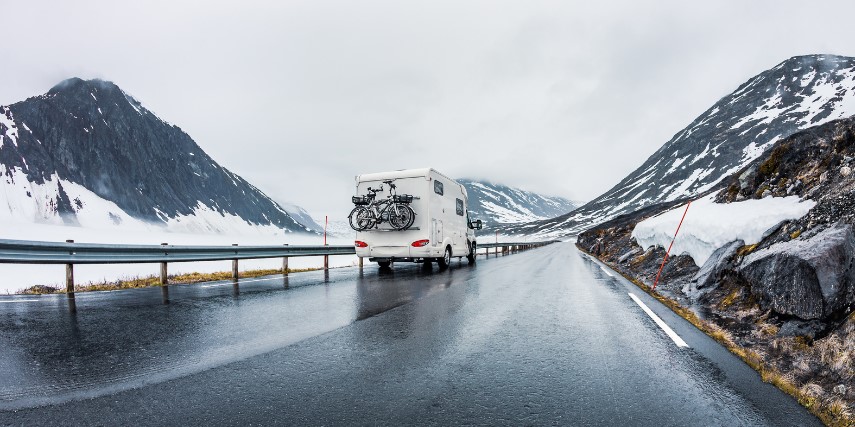


One key concern for RV owners during the winter months is freezing pipes and tanks. And even though winter may be winding down in some areas, it is still important to be aware of the measures you need to take to protect your pipes. By addressing these concerns, travelers can avoid costly repairs and enjoy worry-free adventures, no matter how low the temperatures drop.
What Happens When Pipes Freeze?
When water is left in pipes, hoses and tanks, and the temperature dips to freezing or below, the water will turn to ice and expand. The result is cracked lines and fittings, blocked drainage and backups. When the ice thaws, you’re left with a mess that, if not attended to, can turn to mold, mildew and even rot during the warmer months.
Some RVers escape the winter weather by traveling to southern, warmer climates, but many are left to take precautions as the snow accumulates and thermometers go below that 32-degree mark. We’ve compiled some tips that should help you avoid expensive fixes later.
Tape it Up
Heat tape has been a solution for many RV owners. It’s an electric heating element that is designed to be wrapped around pipes and hoses to prevent them from freezing. Used with a thermostat, you can ensure that the tape stays at a safe temperature and shuts off when the temperature goes above a pre-determined setting.
For RV maintenance, heat tape is a critical component for winter camping and avoiding the headaches of blocked lines and potential ruptures. There are also tank heating pads on the market to keep your water supplies, as well as your wastewater, from freezing.
Insulation
RVs have a lot of space under them, which means cold air flows freely and can create thermal inefficiencies. This leads to not only an uncomfortable living environment, but also the potential for frozen pipes.
Insulated skirting drastically cuts down on the airflow under the RV and assists in keeping pipe temperatures in the safe zone. Upgrading insulation in other areas of the RV, including around pipes and the black and grey tanks, is also a winterizing tip that many RVers follow. You can also consider door and window insulation kits for keeping toasty.
Emergency Action
What if you’ve taken all the RV maintenance precautions but Old Man Winter throws a particularly nasty cold spell your way? In this situation, you’ve got to rely on heat sources to thaw out your pipes, hopefully before they’ve expanded to the point where they’re damaged.
A hair dryer is a good method, as you can apply heat directly to affected areas without fear of damaging your lines. If you use a more powerful heat gun, be sure to only apply the heat in small doses so you don’t melt your lines. The heat gun is a faster method, but requires a bit more precaution when using.
Another heat source solution is a seemingly simple one: a 100-watt bulb. The bulb cranks out a steady amount of heat for warming up your holding tanks, as well as provides a slow thawing method for the immediate area.
For further winterizing strategies, visit us at Gray Diesel & Equipment Services. Our team wants to make sure your RV is operating at its best.